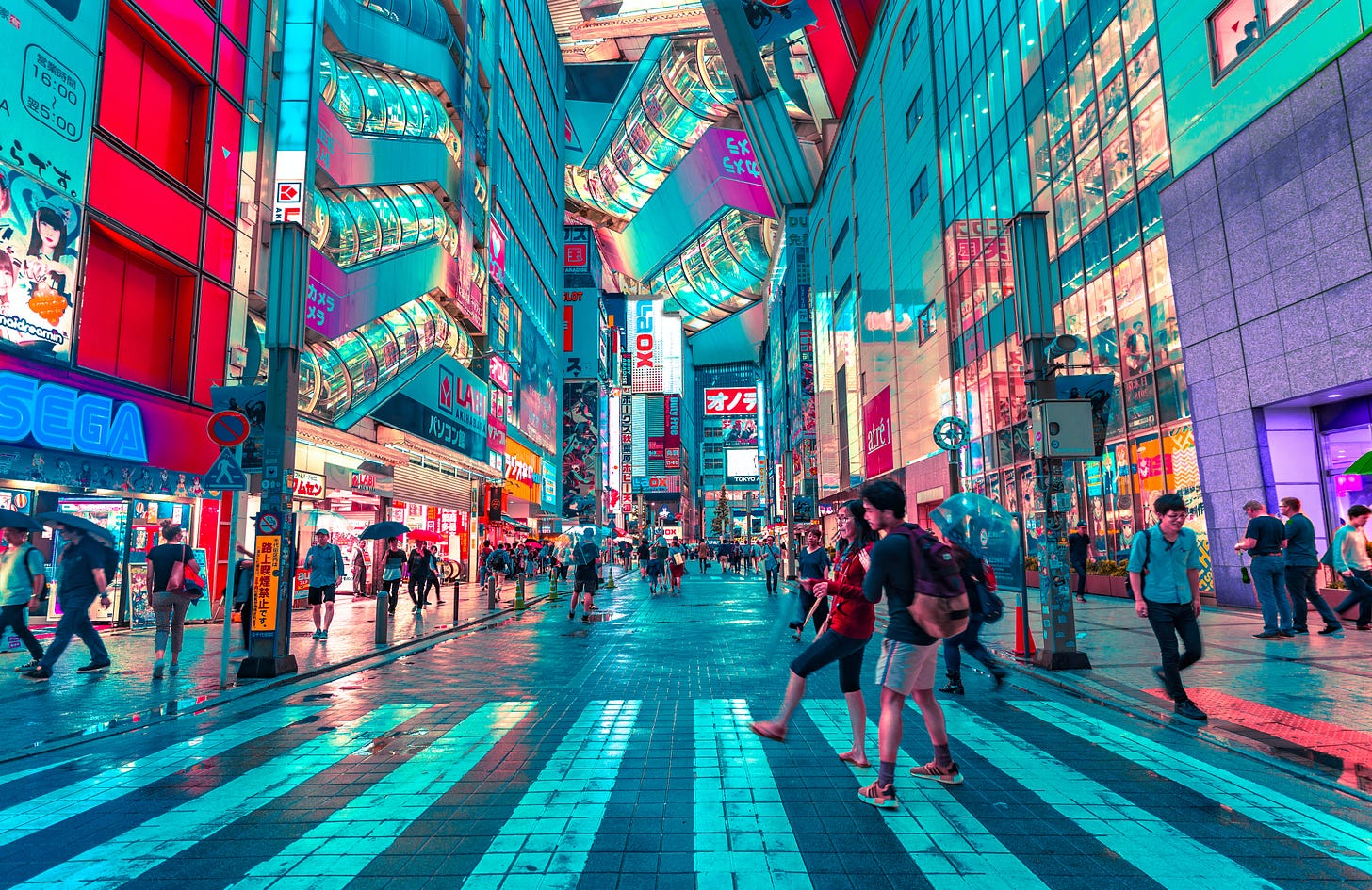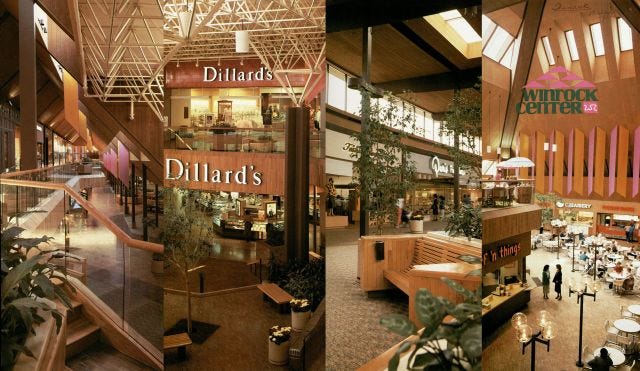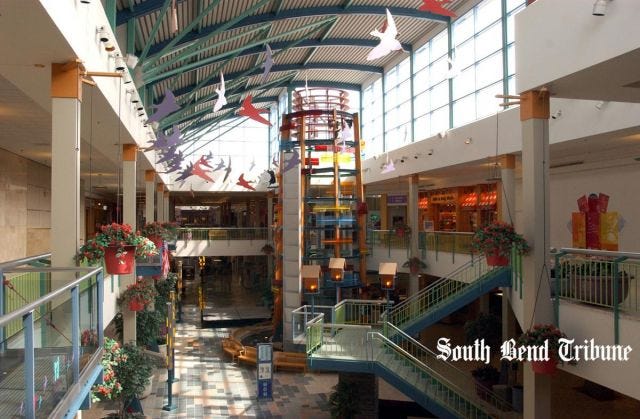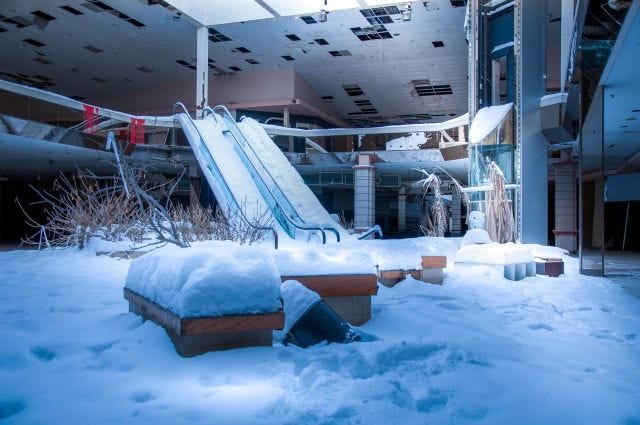An ideal shopping mall

It is March 2020 and we can't go to the mall.
Yet somehow, complaining about not being able to go to the mall is not very 2020 of us. It's barely 2010. The coronavirus has completely upended our way of life and even after it ends, most of our norms are headed for change. We may not be able to go to the mall right now, but would we have gone without a global pandemic happening? And are we going to go when it's over?
The American shopping mall was popularized in the 1950's and is known as a hub of suburban life and culture. Bustling with people, shops with everything from vitamins to CDs and novelty Christmas decor, a food court with popular fast food restaurants and occasional hole-in-the-wall offerings, malls were once where we went not only to spend money, but to spend time with family and friends. These days most malls aren't centers of high leisure or consumer activity. They've seen downturns in foot traffic and constant store closures. Though the 21st century has yet to be kind to retail as a whole, the 2008 recession was especially rough on the industry.
After the 2008 recession malls saw a steady decline. Of course this was partially due to shoppers saving money rather than spending, but shopping malls refused to accommodate and respond to a changing world. Post 2008 we saw the rise of online shopping, the rise of niche markets and startups, and rapid changes in consumer behavior and tastes. The lack of adaptation led to this basic fact: the mall is no longer a communal space for community members. It is a place to get in, find what you're looking for, and get out.
Once equipped with plenty of seating, most malls have removed benches and chairs. This doesn't allow most visitors, especially those with breathing trouble or difficulties walking, to stay very long. Mall offerings have also decreased in quality. What we can expect to see in our local malls today are Forever 21, an increasingly out of touch storefront that is also feeling the effects of changing consumer behavior without changing its business model, Victoria's Secret, another store that has lost touch with consumers and has become known for trans and fatphobic statements, and other forgettable brands such as Express, Charlotte Russe and GNC. Even the beautiful aesthetics of malls have vanished. There are no more fountains, no more cobblestone flooring, no more art installations, no plants, and no more natural lighting. Our malls have gotten to the point where they so desperately want us to spend money, but have offered us nothing in return.

Winrock Center in Albuquerque, New Mexico (1980's)

Scottsdale Mall in South Bend, Indiana (1980's) - closed and demolished in 2004

A snowed in abandoned mall by photographer Seth Lawless
With a new global recession hanging above our heads and the likelihood of a depression looming, the future of retail and just about every industry is uncertain. But with every challenge comes the chance to restrategize and recover. It's not impossible for shopping malls to make a turnaround, but the key to a bounce back for almost any retail brand will be creating experiences. Doug Stephens, also known as the Retail Prophet, describes a true customer experience as something that goes beyond aesthetics, ad campaigns, and better service. "It means digging below the surface within each moment to understand the underlying customer need and designing the exact combination of people, place, product and process to deliver delight in that micro-moment. It means reconnecting with the company’s unique brand story (also known as the reason anyone should give a shit) and weaving it into every customer interaction. It involves using different language, methods, rituals and processes than your competitors so that the resulting experience is tangibly foreign and fascinating compared to anything else they’ve been through." Customer experiences such as these are what leave a lasting impression on consumers that goes beyond product. And this is what the mall should be. Just as we go to museums for experiences, the mall should also be a place for discovery.
The ideal shopping mall of the 21st century (because let's be honest, hardly any of them reflect the way the world is now) would curate its store offerings to a modern customer. This means lessening space for stores that have a reduced customer interest (think Forever 21 and Victoria's Secret), keeping those that are consistent (Bath & Body Works, Apple, Finish Line, etc.), and making room for brands that offer a unique customer experience (Warby Parker, Glossier, etc.). Space should also be left for revolving pop-up shops, since it is a brick and mortar model that is unlikely to disappear and offers customers new experiences every few weeks or months. In addition to this, malls should reassess their decor. At some point in the 2000's, malls were known for minimalism, but most malls are now so minimal that they're barren. Greenery and natural lighting are known to make spaces more inviting and seating should make a return to open areas. Art installations and pieces would also bring more life to the mall environment. Ultimately, malls should reimagine their designs from the 80's and 90's, but with a 21st century flair. Nostalgia is still in, even for interior design (mid-century modern, anyone?). And finally, the food court needs an update. If the mall is a community space, it also makes sense that community members should be able to support and discover local businesses there. Of course every food court should have its traditional offerings, but allowing local restaurants to vend their gives it something that is specific to that community and of course, added cool.
Though there's no way of knowing where our malls are headed after this economic downturn, there's still hope for a rebound and hope for a new future of retail, shopping and customer experience. If you have any interesting ideas for the mall of future, send a reply! Nothing is too crazy, ever.
x Hillary
Related reading:
Why Retail is Getting Experience Wrong
13 photos of vintage malls in their 90's glory


